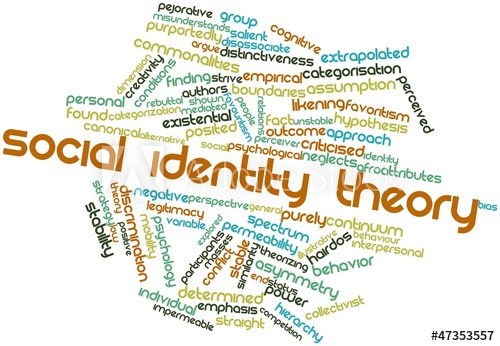SOCIAL IDENTITY THEORY This article consists of 8 pages and 1700 words. In order to have full access to this article, email us at thedocumentco@hotmail.co.uk
Ref No: 3446
Compare and Contrast of Social Identity Theory and Social Representation Theory
Serge Moscovici has described the phenomenon of social representation as,
“systems of values, ideas and practices with a two-fold function; first, to establish an order which will enable individuals to orientate themselves in their material and social world and to master it; secondly, to enable communication to take place amongst members of a community by providing them with a code for social exchange and a code for naming and classifying unambiguously the various aspects of their world and their individual and group history” (Herzlich, 1973).
Social representation has been extensively discussed as theory that dedicatedly explains the approach of society as a single unit that provides a symbolic vision for common practices among the members.
Earlier, it has been stated that social representation has arrested all the focus of researchers yet there still exists a number of ambiguities associated with the phenomenon. These obscurities have been noticed by Voelklein & Howarth (2005), who have studied the theoretical, social, cognitive and critical aspects of the notion. Critical review has commended that these factors are mostly misinterpretations however, some of them require to be expanded for the sake of refinement. It further highlights the dynamic and crucial relationship between the whole society and an individual person. It is a vibrant paradigm of the societal structure as it should be duly noted that is the faction of individuals, who group together in large number to form the society (Voelklein & Howarth, 2005, pp. 431 – 454; Doise, 1993, pp. 157 – 170). With regard to the strong association of individuality with the societal structure, this analysis has reviewed the theories of social representation and identity in a contrast and comparison manner with respect to their development.
Theory of social identity provides an intricate model that emphasizes the individual needs that may motivate the members of a group to develop positive approach. The phenomenon describes the dynamics of interpersonal and intergroup notions. Following in, theory of social representation fundamentally delivers a model that concerns the individual communication within the societal structure and belief system that ultimately builds the social representation for the group (Turner, 1999, pp 6 – 34; Tajfel, 1978). Despite of appearing as an inter-related approach, both of these theories present a contrasting set of characteristics in terms of a paradigm shift within the social psychology. The key divergence is the basis of these theories, where social identity deals with social cognition while social representation involves the social construction. Regardless of the varying basics, an attempt to compare these theories has been presented in this work. The integration is believed to assist in identifying the probability and sources of conflicts and discrimination occurring between individuals within the society (Tajfel & Turner, 2004).
Moscovici has stated that social representation exhibits the notion of cognition at a point, where the theory applies to facilitate communication among the members of one social group concerning their mutual interest. In such scenario, it becomes necessary for the individuals to express their novelty in relation to other people of the group or things and present or past events. Their ideation eventually develops the framework of familiarity in a society. Thus, it is identified that social identity theory in a distinctive manner describes and supports the processes that develop and shape the frame of society that ultimately exhibits the social representation (Moscovici, 2001; Forgas, 1981).
Social identity and representation presents a myriad of features that can be compared for developing an insight. Here, we have highlighted the issue that addresses the association of representation with the social functioning of groups. For the purpose of gaining comprehensive understanding of individual role within a group, it has been considered that how a person may reflect to the structure of society by preserving their identity. It has been observed that the dimensions of social representation vary and evolve with time and in accordance to the presenting situation. On other hand, social identity presents the self-concept that apparently is extracted from the nature of inter-group relationships. Values and sentiments associated with the groups, in turn determines dynamism of motivation that ultimately produces the specific theory of social representation. Thus, it is realized that the notion of positive social identity does not only depend upon the cognitive abilities and nature of an individual rather they also attribute to the social values and beliefs that a group follows (Augoustinos, Walker, & Donaghue, 2014; Tajfel, 1978).
Social identity theory assets that the model of individual identity is developed with the influences of memory, consciousness and biological assertions. While, the physical factors that develops the social structures are influenced by the collective approach (Breakwell, 2015). It has been described that the frame of identity develops with the ideation of two mechanisms that includes assimilation and accommodation. These two processes are the basics of memory system that absorbs the elements of attitudes, values and styles from the surroundings and adjusts the image according to the presenting structure. Individuals then measure the perceived information with their unique vision to infer the ideas of the society. This phase of evaluation has been observed to be more inclined towards self-interest. Thus, it is not necessary that the social identity develops accurately in compliance to the surrounding and may vary with the personal interests and preferences…..


Recent Comments